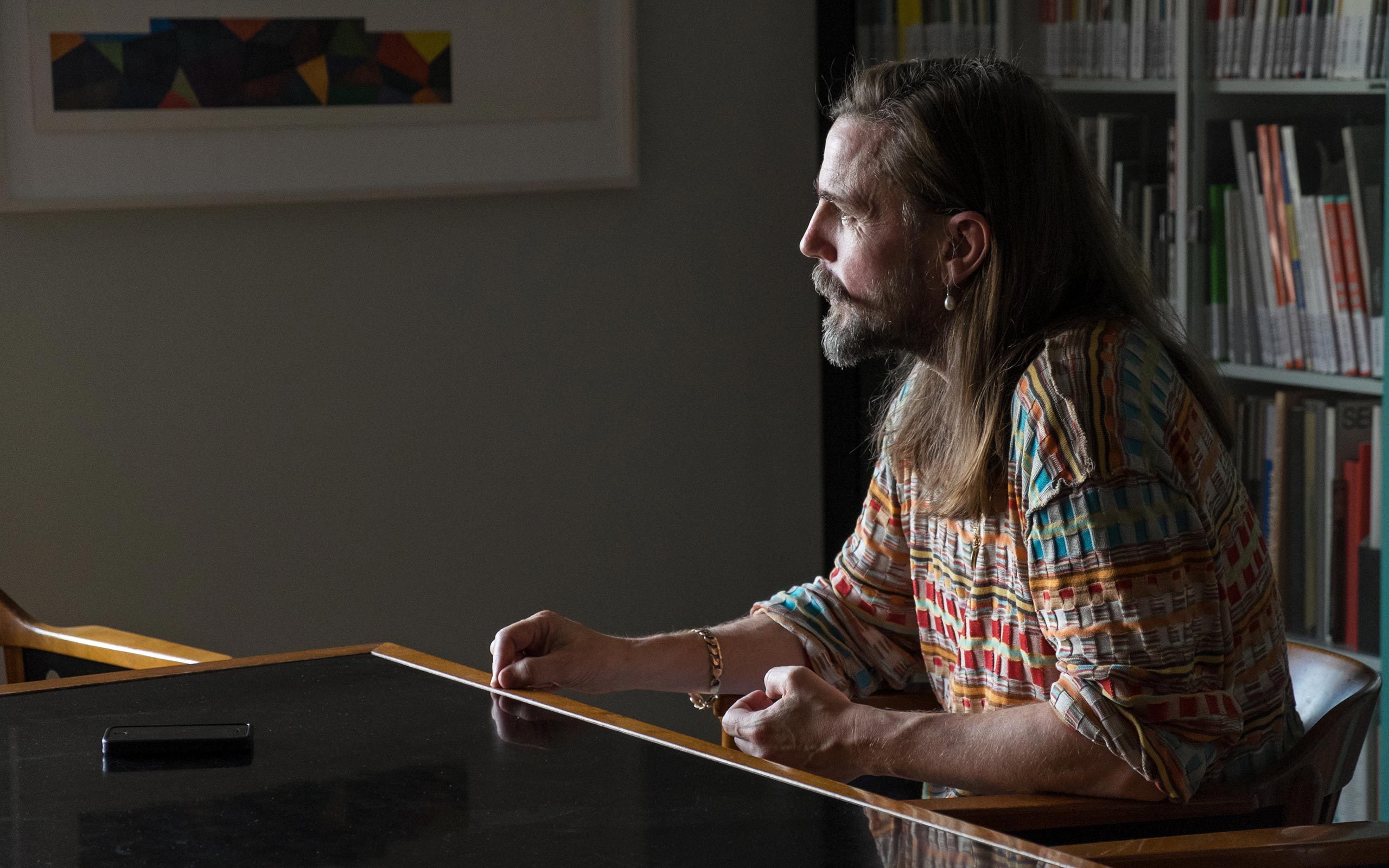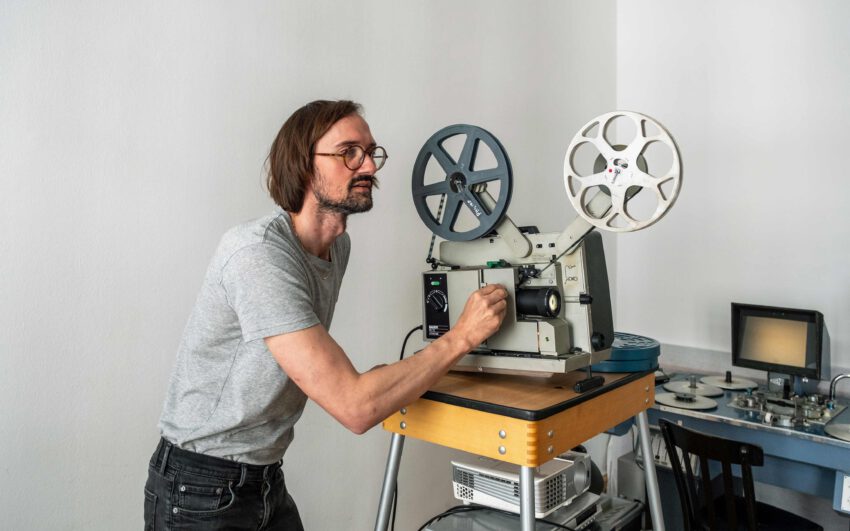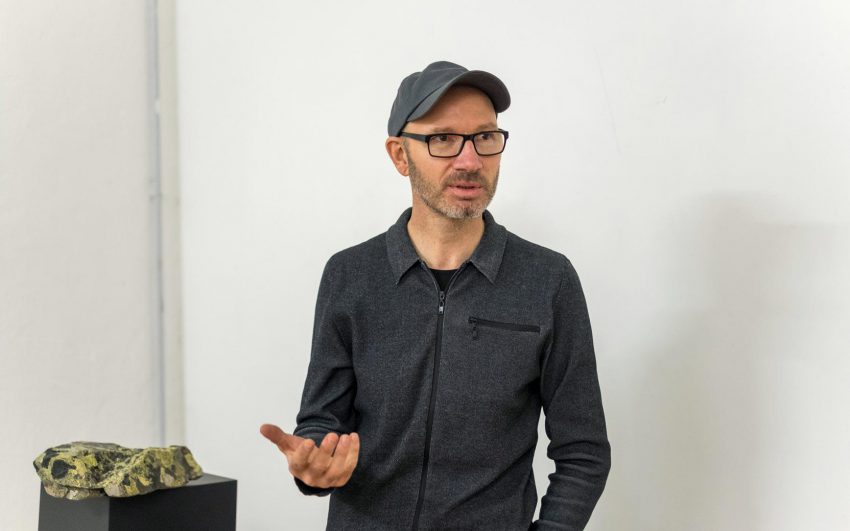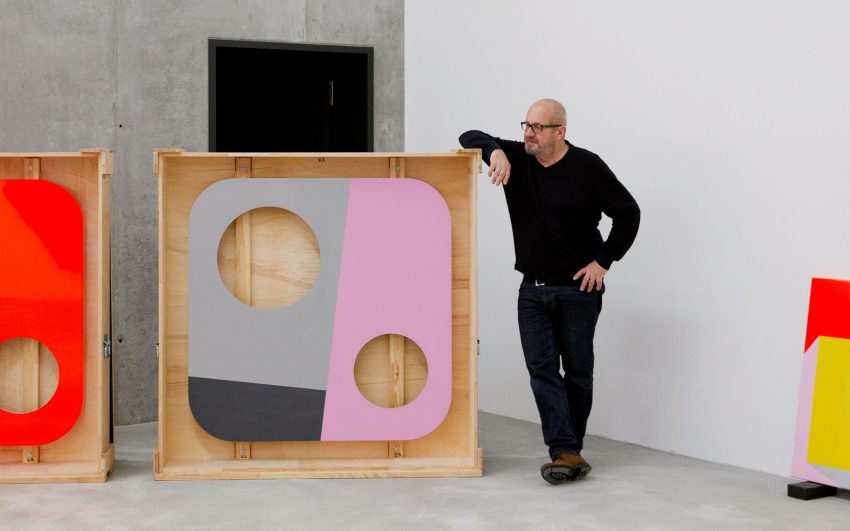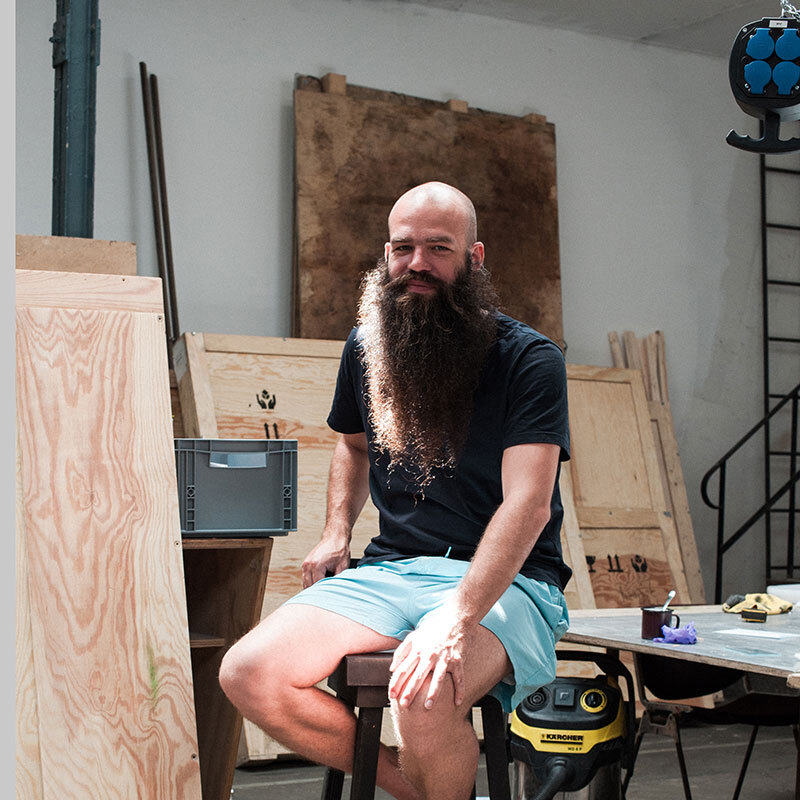Mark Leckey is hailed as the artist of the YouTube generation. His first major video work, Fiorucci Made Me Hardcore (1999), was informed by the artist’s working class upbringing. His more recent work combines ancient and digital items to examine the way objects “speak” to each other. GreenScreenRefrigeratorAction (2010) features a Samsung smart refrigerator “acting” against the background of a green screen, while The Universal Addressability of Dumb Things explores the Internet of Things, the science fiction–like scenario of digitally embedded sensors that allow humans and machines to remotely interact. In 2008, Leckey won the Turner Prize for his exhibition Industrial Lights and Image.
Mark, it's the last day to prepare your exhibition at the Secession in Vienna. We are in the President's Room of the Secession building. Your latest show is called »We Transfer«. Why did you choose that title?
Well, it is a bit cheesy, if you know that expression. WeTransfer is actually a file transfer system. It evokes for me the idea of how things are constantly being transformed or transported from one state to another. Everything on these screens in the ground floor exhibition hall is an image being generated on LED panels. They don't look very fixed or very stable. They slightly flicker or hover on the support. So these images feel a little bit immaterial, ghostly, and transferable to me. It's not like a painting, where everything has a permanence and things are like set down. There is too much technology.
Isn't it ironic that you of all people say that? Your whole art seems to be based on technology, advancement, the internet, accessibility of images. Is there really too much technology?
No, not really. It is what we are now. Technology to me is an amplifier – even more, an extension. But that extension can be disorientating sometimes. Technology is a sort of mutation of us. We invent technology, but then technology invents us. In that process we transform into something that seems to be less human possibly. That's my kind of anxiety about it, that we feel ourselves becoming more machine-like while machines become, or at least they seem to become, more alive.
You were born in 1964 and earned a BA in 1990. And then you escaped. It is often mentioned in biographies written about you. I've read you moved to New York City and came back to London. But what did you do in those 9 years?
You know I got lost. I did lot's of really crappy jobs at the end of which I found myself doing web design. That was at the very early stages of the web, sort of 1996.
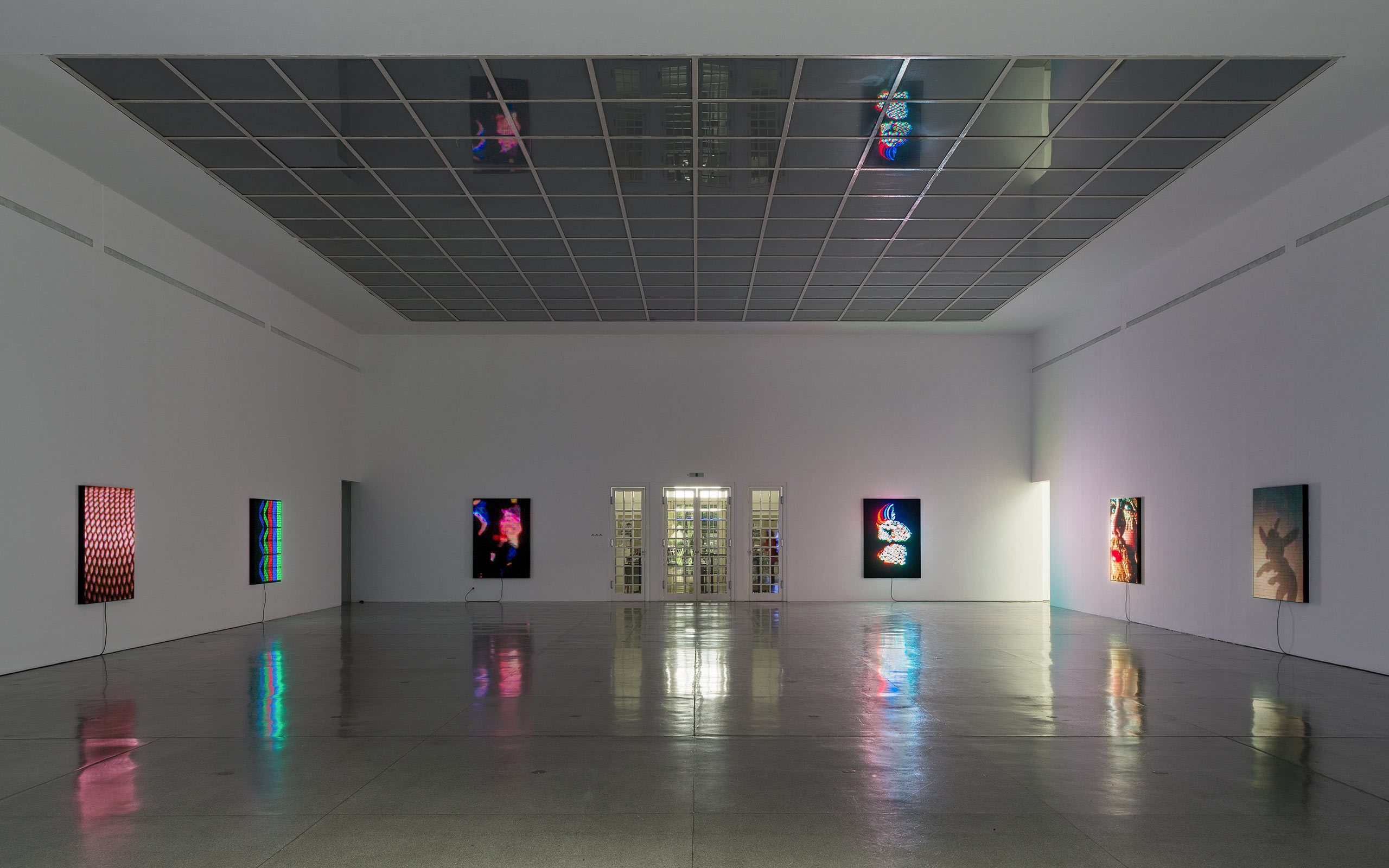
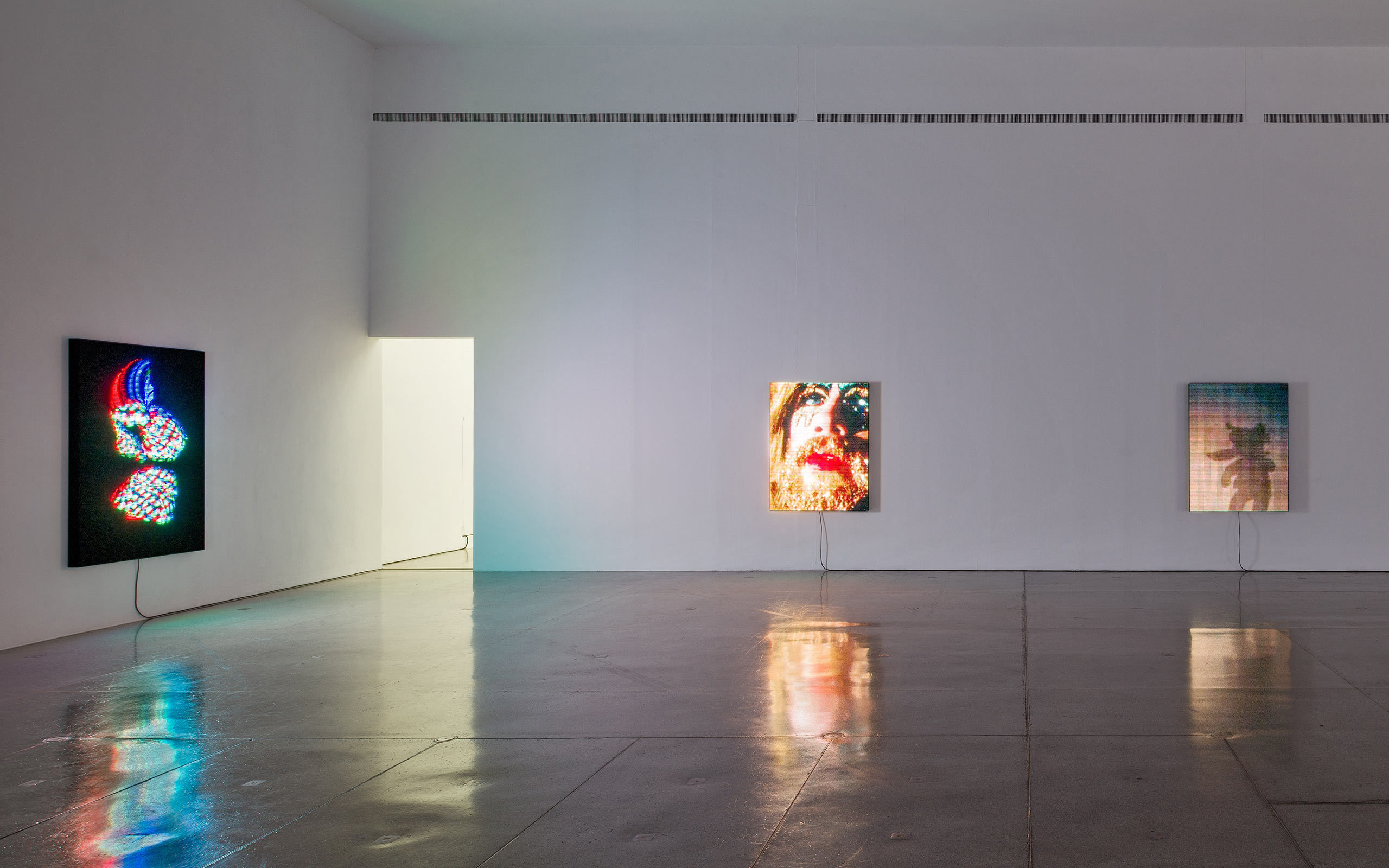
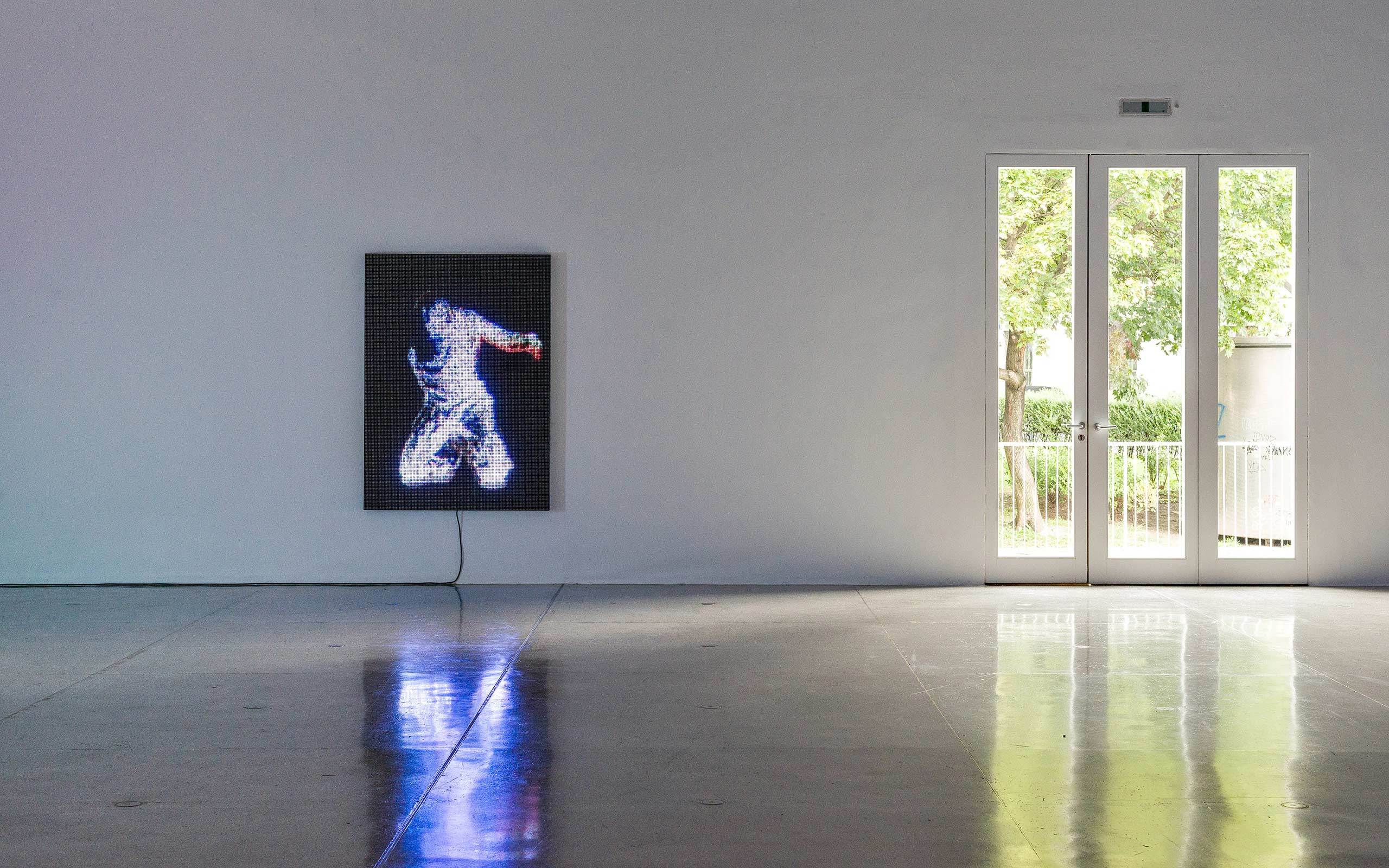
So you might call yourself a pioneer of the web?
Well, in a way I was a pioneer. I was working on Wall Street on the website of American Express in 1995. Nobody knew at the time what a website actually was, and neither did I. (laughs) Anyway I guess that was what got me interested in technology, in the internet.
How did you find your way back to art?
I got to know a lot of people who got involved in early internet art. People like the Rhizome, and then there was this place in London called “Backspace”. So I kind of ended up coming to the art world through the backdoor.
Since then, your career seems to have developed rapidly.
In the art world it's quite a long time, I think. Something like 15 or 16 years. Now there are artists, who have developed a lot quicker than me. The Young British Artists today are developing quite quickly, in 2 or 3 years.
Why do you think is it like that?
The art world has become a bigger industry. There is more investment. So things move at a much quicker pace.
What does it mean to you to be invited to Vienna by the Secession?
It means a lot! It is a place I have always been aware of. I mean aware of its history, and aware of artists maybe of a slightly older generation than me. I was aware that they have a very good programme. And then the building of course.
What do you think about the main exhibition hall?
I think it is stunning. However, it is not so much the exhibition hall in itself. It is a template that is quite familiar. But it is the whole entrance to the place that gives it a kind of different energy. There is something quite sacral about it.
Sacral? What do you find sacral about it?
It just seems impossible to replicate something like this today. I mean the idea that artists would form together with investors and build something like this seems unlikely in this age. It is peculiar of its time. You feel the weight of history!
Artists respond very differently to the symmetry of the Secession. You did not break with it in your show.
I am quite a symmetrical person. I am quite autistic in this respect. (laughs) I don't like asymmetrical things. They upset me.
How would you describe what you do every day to someone who does not know you and your work.
My day is actually really boring. It is about production and administration. That's my day. And I am just sitting on a computer. I am collecting hundreds of images.
Isn't that what we all do every day? Collecting images from the web?
I think everyone does it now. That is for me the big shift. What possibly defined you as an artist was this urge to collect. But now I think every does it. I don't think it is peculiar to artists anymore.
So what is the goal of an artist or a filmmaker if everyone is a collector?
I guess there is still the act of transformation.
Your latest work is a film shown in one of the rooms: Living Within The Ecstasy of Always Bursting Forth
I wouldn't call it a film. It is more like a picture that moves. It is just a loop. All of the images in the show move in loops, even the LED panels, although their movements might be quite limited.
You use a really old Sony projector for this work. Why? It is really huge and must have been hard to find.
Not really. With eBay these things have become quite accessible. (laughs) It's got three lenses – one for each colour red, green and blue. The loop is in black and white, but then there are these colour blocks where it turns red, green and blue.
Reading the eyes of the person in that scene, one can see insecurity, loss, angst.
Good. That's me. That's me acting.
You have taken a film still of a movie called One - Two - Three by Billy Wilder. It was shot in Berlin in 1961 as the wall was built. Do you refer to the story, the content of the film?
Not really. Again it was on eBay that I came across that picture of Hans Lothar. I fell in love with that image immediately. To me it is like an image of a saint. It represents the idea of absolute humiliation, abjection like St. Jerome in the desert. That's a moment when you are filled with god and at the point where you are destroyed by your humanity, all your fears and anxieties, trials and tribulations - and it is then that you transcend. I am fascinated with this early Renaissance imagery of saints, like St Jerome or Job – the suffering ones. Just because of their beauty, their empathy, and their vulnerability.
It is the figure of a middle-aged man in a polka-dot dress and hat, kneeling on the pavement in supplication. He looks so akwardly that people could laugh at him.
Yes, it's the image of a man that is vulnerable. You could also laugh at the work. As an artist you're always open. Every time you show your work you could be ridiculed. Being an artist is some kind of ridiculous.
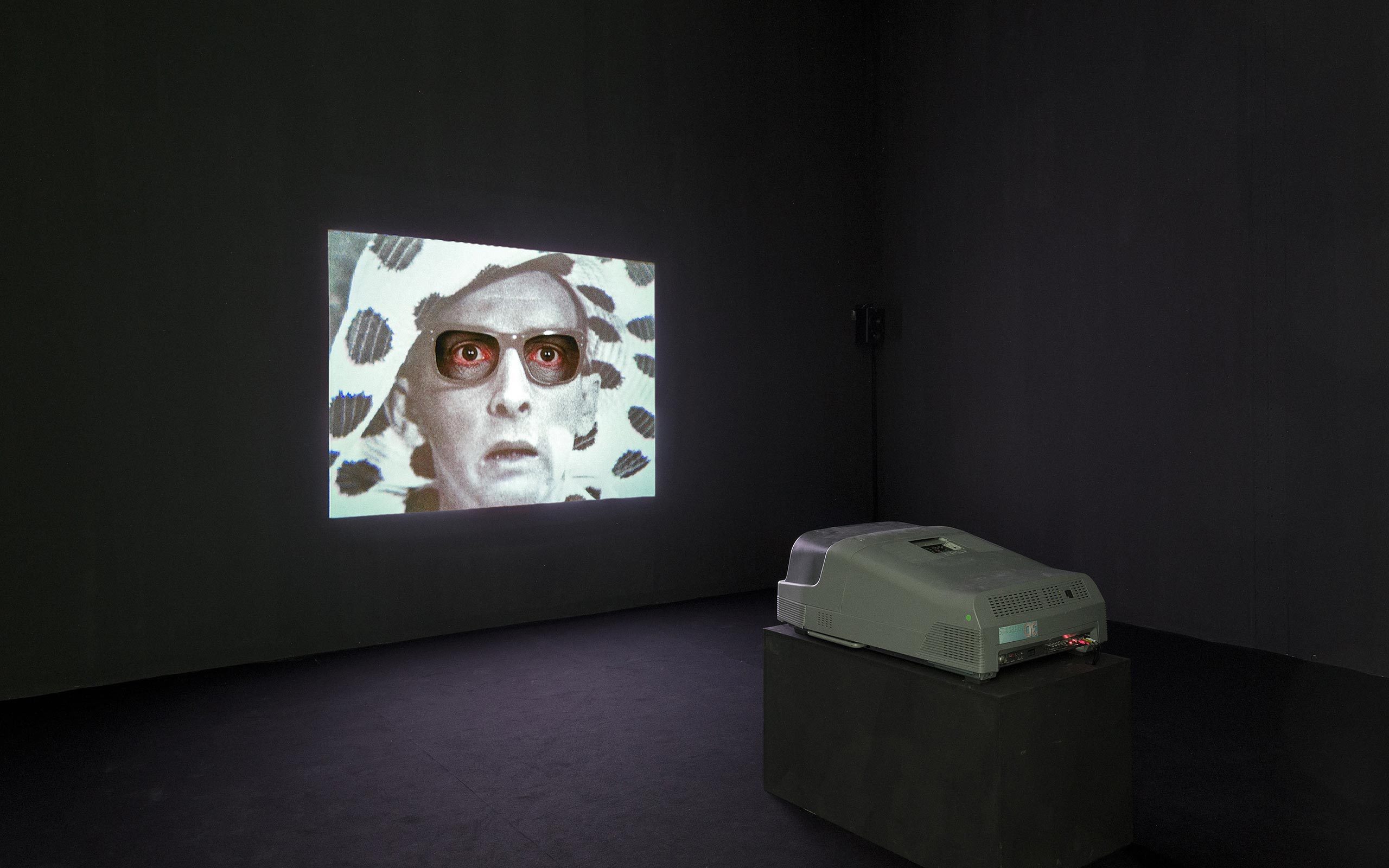
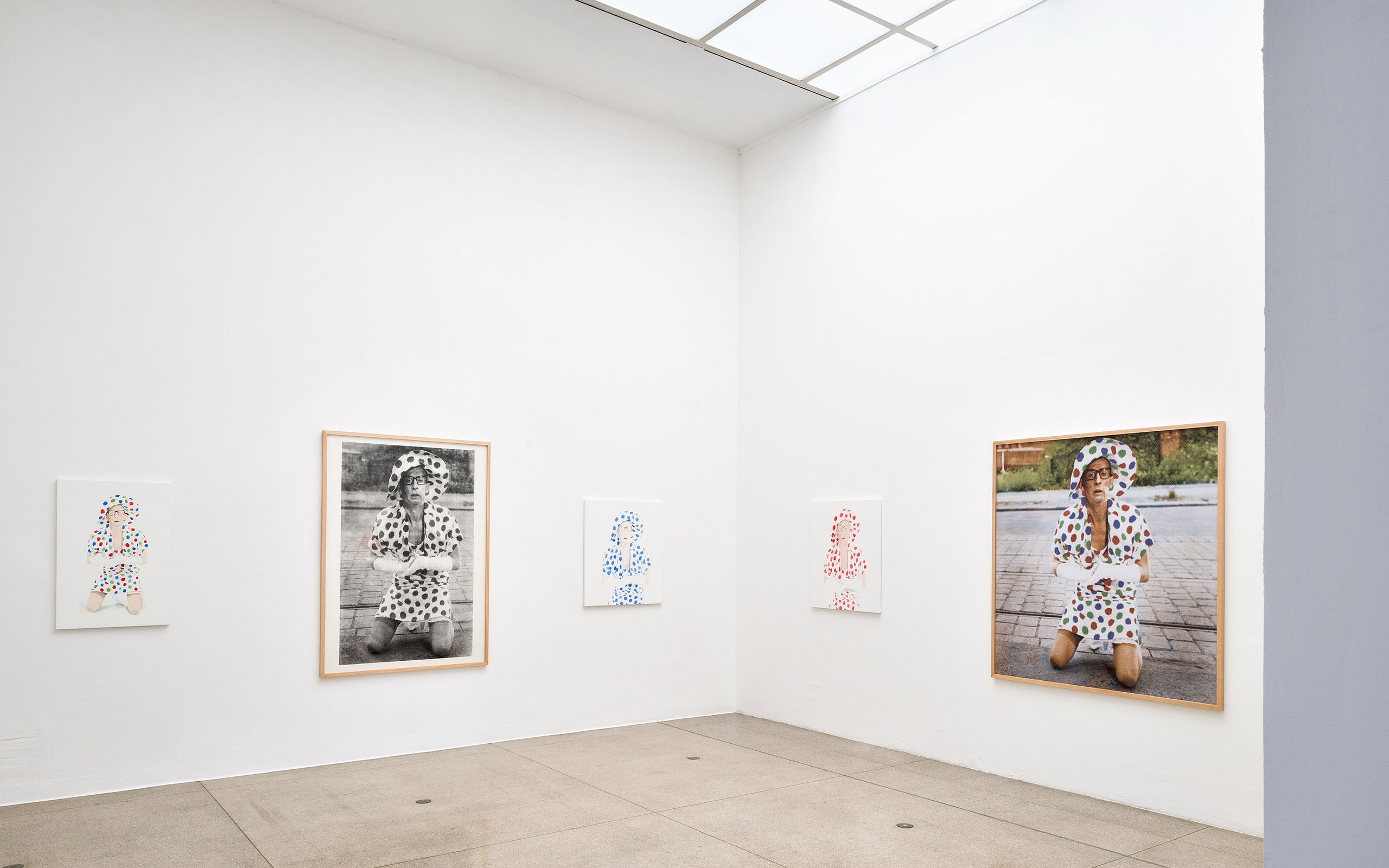
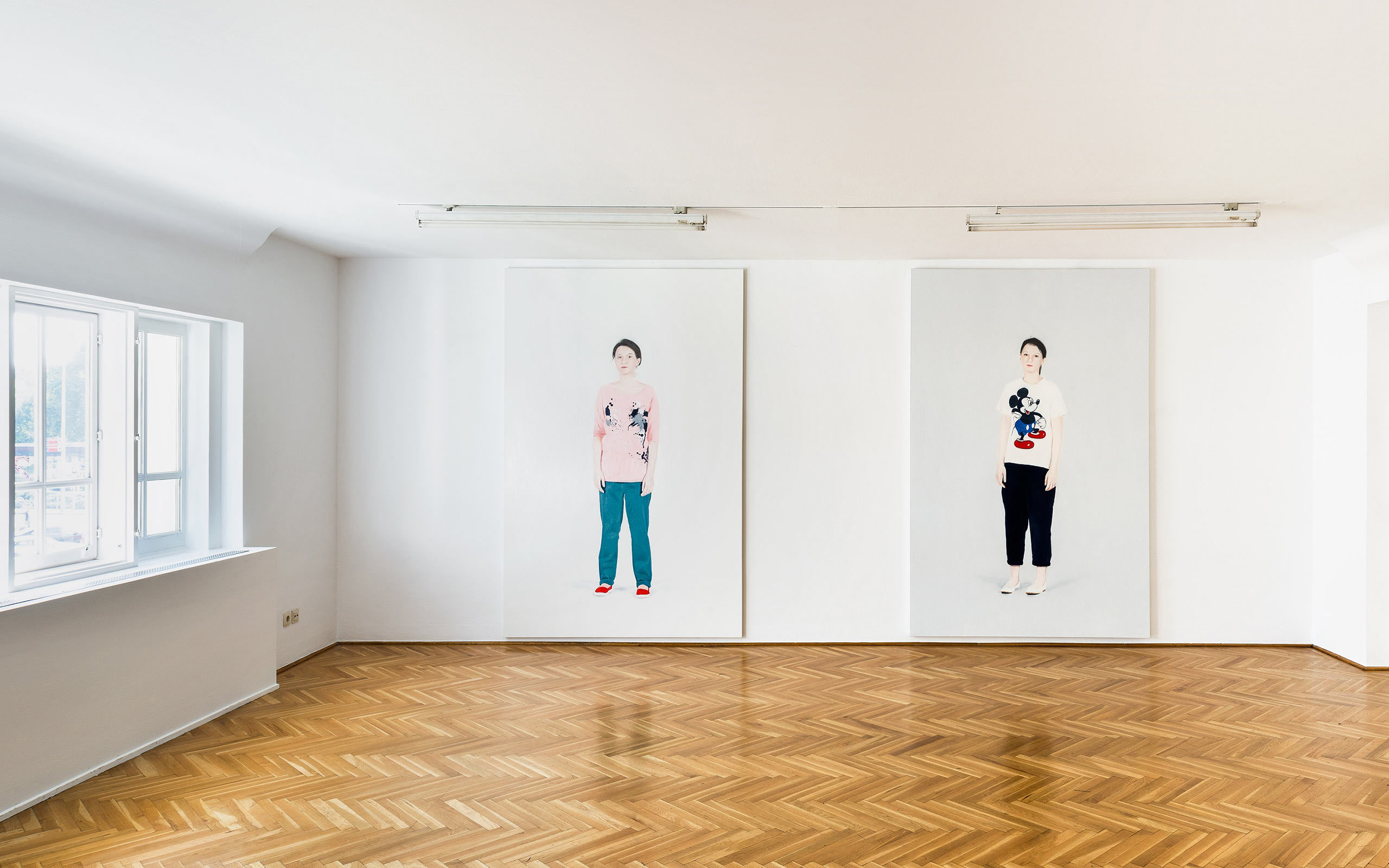
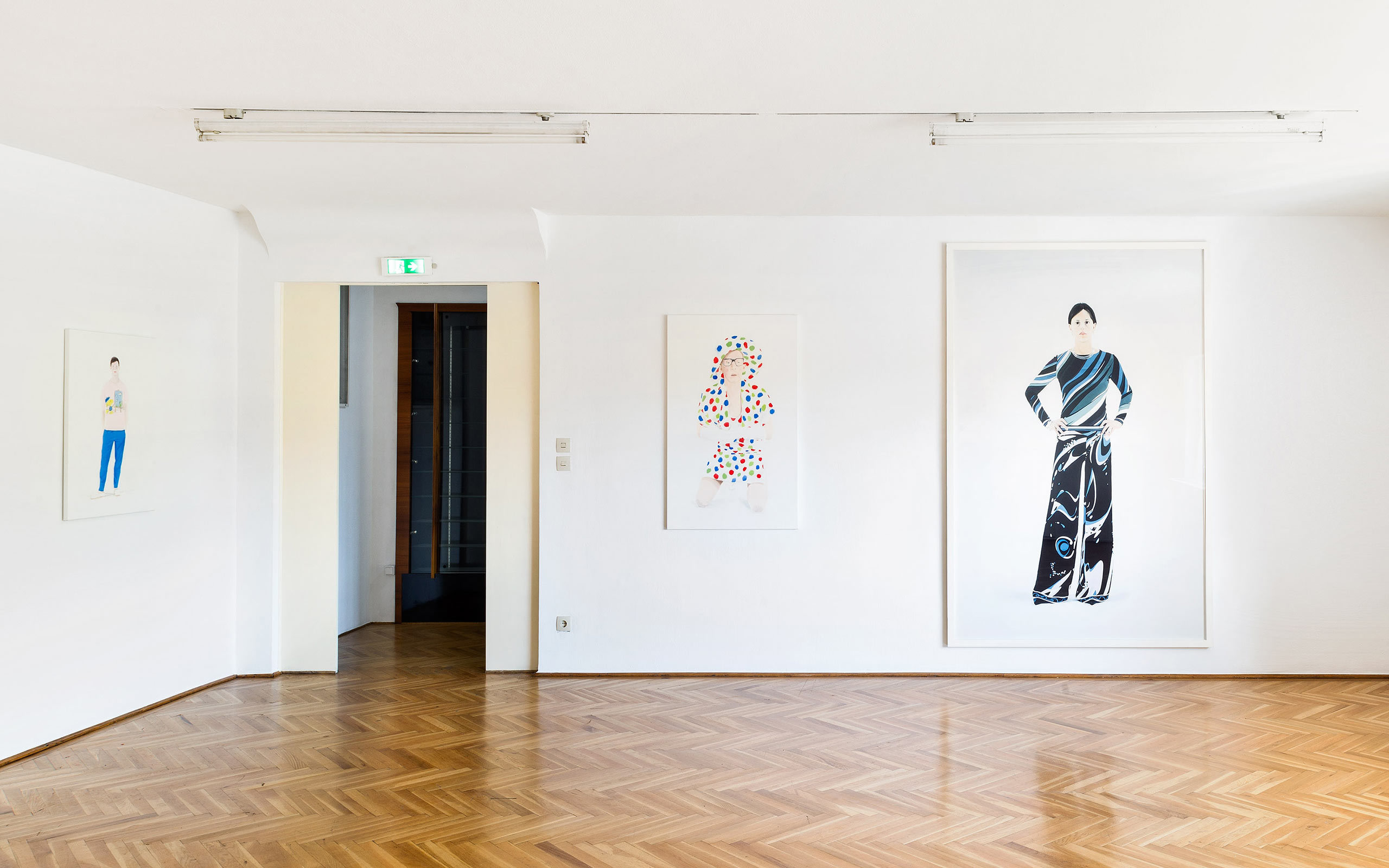
The art-nouveau artists founded the Secession on the belief that art helps to transcend people in an almost religious way. It occurs to me that your ideas connect much more to this art-nouveau tradition and this place than I had ever thought of.
My personal idea of transcending is more about imminence. Instead of going outwards you go inside yourself. I think the idea of real transcendence in gnostic terms can be a frustrating one as we will always be earth-bound and material. It is the agnostic ideas about transcendence that excite me. And they excite me enough to generate work. I use them as a sort of engine.
So what exactly are you looking for in “transcendence”?
I guess I am looking for a moment of ecstasy. There are tools that allow you to have a moment, as brief as it may be, to feel transcendent. You know, I can't believe in christian or gnostic transcendence. True ecstasy is a point of becoming beside yourself, being able to regard yourself but, at the same time, being in yourself. It is this moment where you are just enjoying yourself in the world.
So ecstasy means for you to get immersed in your work while being able to look at it from a distance?
Exactly! It has to do with being totally involved and at the same time looking at it. You want that oscillation between the two. It is that beautiful, that perfect moment - where you are outside of something, but at the same time within it.
In your current show, we can see among others a scene of Walt Disney's Pinocchio, who changes to a donkey, but also a drag queen, the full moon, a light map of Great Britain, the Polka Dot Man, a penis, a blown-up RGB pattern, dancing people, which you're already well-known for. Is it a peculiar mixture?
They are all loops and little pathologies, the things I am interested in, fascinated or obsessed by.
I would prefer to read these images in a more theoretical way. One sees the transformation of Pinocchio just as a shadow. That image is more or less a trace what is going on within the cave. Maybe that kind of shadow also reflects photography in general. You also use lots of these 3-d rendered films. They show unreal objects or at least they seem to be unreal.
They're insubstantial. Then I was not really looking for things which are sort of insubstantial.
And that is the contrary to the paintings of Alessandro Raho whom you invited for the show.
He reacted to the photograph of the Polka Dot Man. He paints portraits. The interest or focus of his portraits is about the clothes the sitter is wearing. So I thought he would like that polka-dot pattern, which he did.
Alessandro Raho used your LED red/blue/green system for those pictorial realization of the photograph.
Yes, I asked him if he could do that - that was kind of a commission.
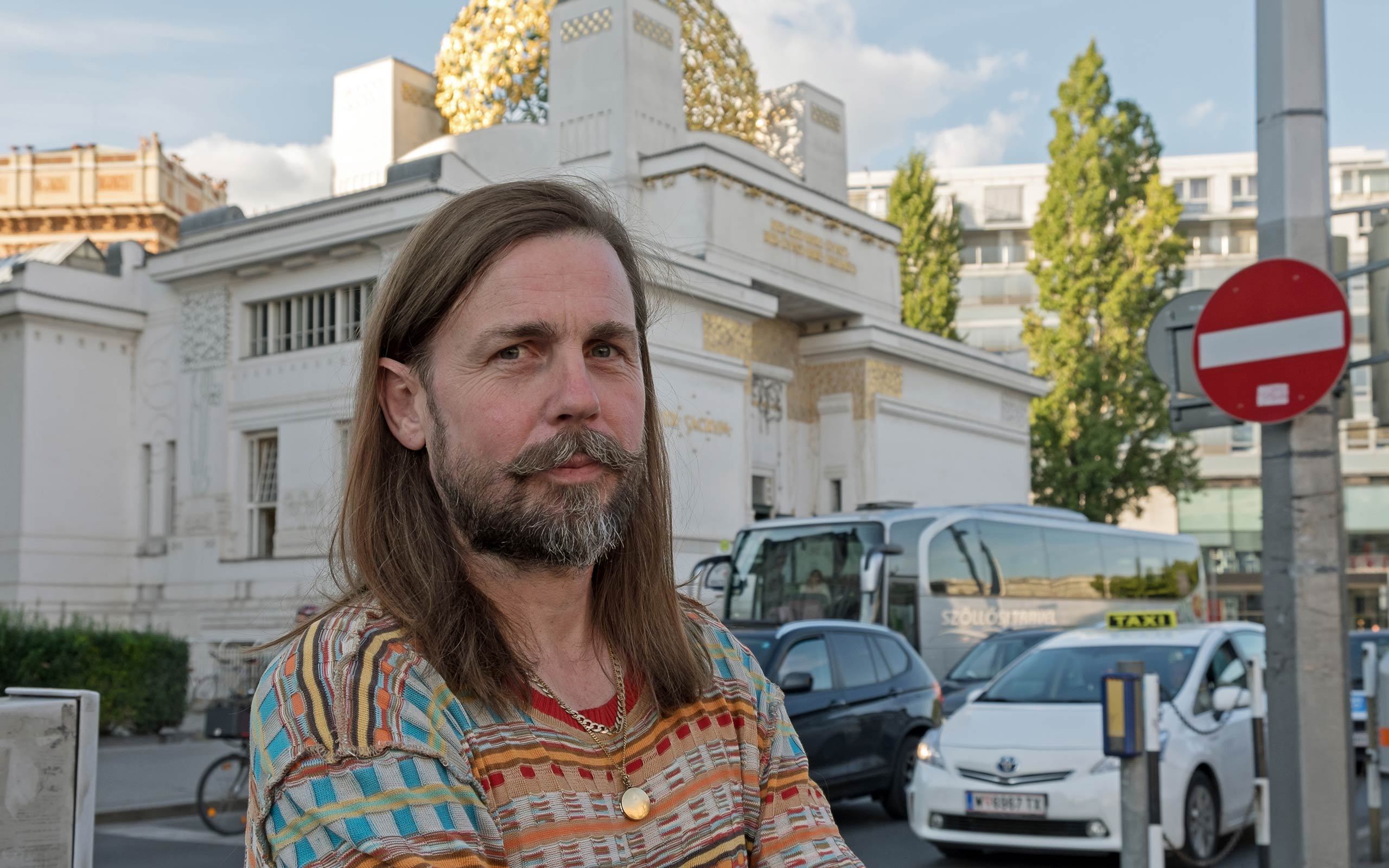
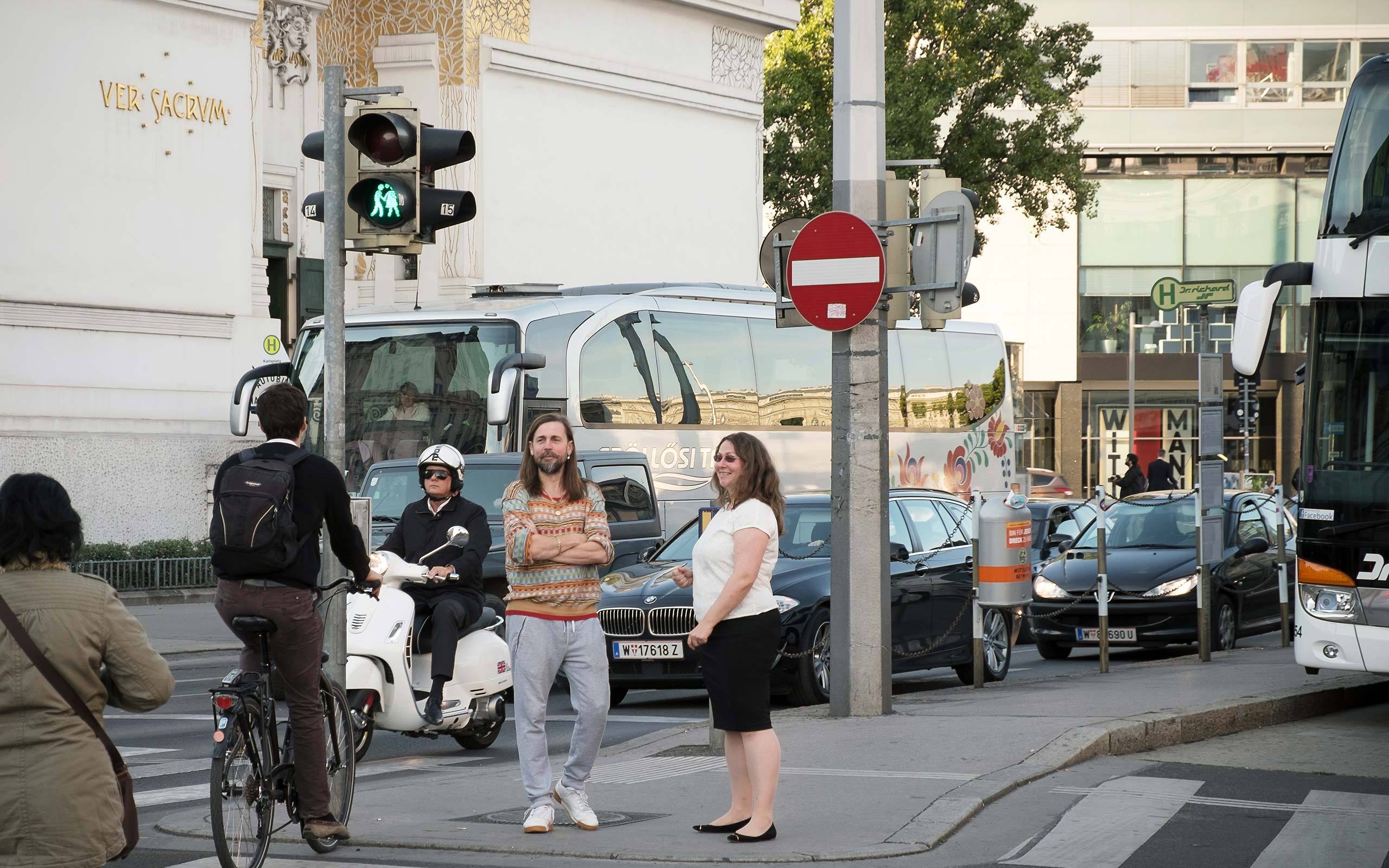
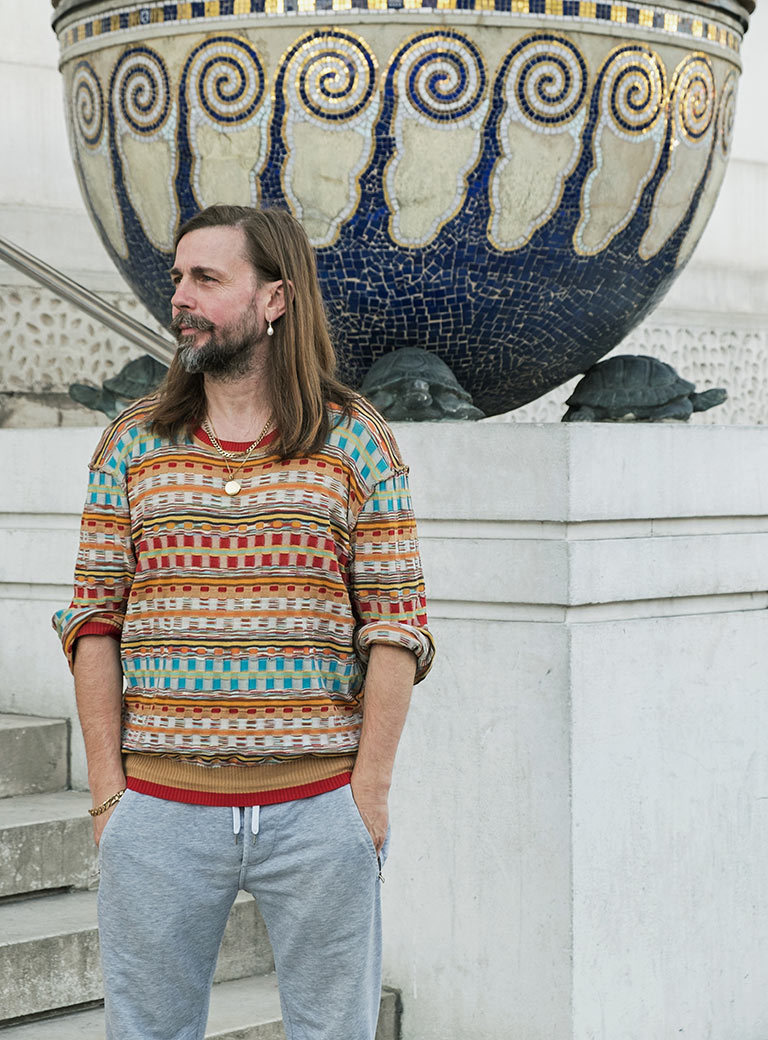
Interview: Alexandra Matzner
Photos: Maximilian Pramatarov


